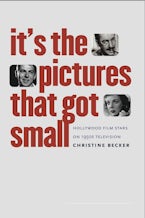- Home
- Wesleyan Film
- performing arts
- literary criticism
- Escape Velocity

A cultural and economic history of science fiction cinema, from B-movies to blockbusters
Today, movie theaters are packed with audiences of all ages marveling to exciting science fiction blockbusters, many of which are also critically acclaimed. However, when the science fiction film genre first emerged in the 1950s, it was represented largely by exploitation horror films—lurid, culturally disreputable, and appealing to a niche audience of children and sci-fi buffs. How did the genre evolve from B-movie to blockbuster? Escape Velocity charts the historical trajectory of American science fiction cinema, explaining how the genre transitioned from eerie low-budget horror like It Came from Outer Space to art films like Slaughterhouse-Five, and finally to the extraordinary popularity of hits like E.T. Bradley Schauer draws on primary sources such as internal studio documents, promotional materials, and film reviews to explain the process of cultural, aesthetic, and economic legitimation that occurred between the 1950s and 1980s, as pulp science fiction tropes were adapted to suit the tastes of mainstream audiences. Considering the inescapable dominance of today's effects-driven blockbusters, Escape Velocity not only charts the history of science fiction film, but also gives an account of the origins of contemporary Hollywood.
Acknowledgments
Introduction: SF and the American Film Industry
Realizing the Future: SF in the Postwar American Marketplace
The Pulp Paradox: SF Film of the 1950s
From Parody to Profundity: 2001: A Space Odyssey and the Critical Legitimation of SF Film
Return to Relevance: Art, Exploitation, and Politics in SF Film, 1968–1976
Revenge of the Nerds: The Pulp SF Blockbuster, 1977–1982
Conclusion: SF Film Today
Notes
Bibliography
Index
BRADLEY SCHAUER is assistant professor in the School of Theatre, Film & Television at the University of Arizona. His articles have appeared in Film History, The Velvet Light Trap, and The Quarterly Review of Film and Video.
"Expertly, Bradley Schauer chronicles science fiction's move from pulpy, nerdy sub-genre to the mainstream, even perhaps the absolute center, of Hollywood cinema today. Through rigorous research, Schauer insightfully revises standard conceptions of genre and productively revises how we do film history."
~Dana Polan, New York University
"More than just another genre study, this history reveals the special effects of an entire media industry, showing how the producers, audiences, and technologies of SF film laid an analog groundwork for our contemporary world of transmedia blockbusters."
~Bob Rehak, Swarthmore College










